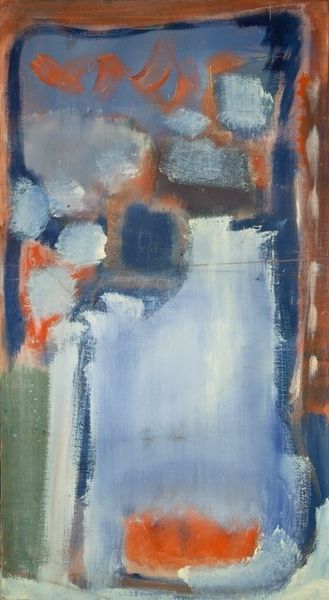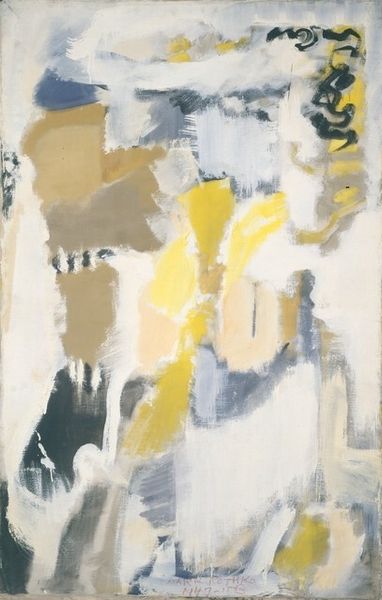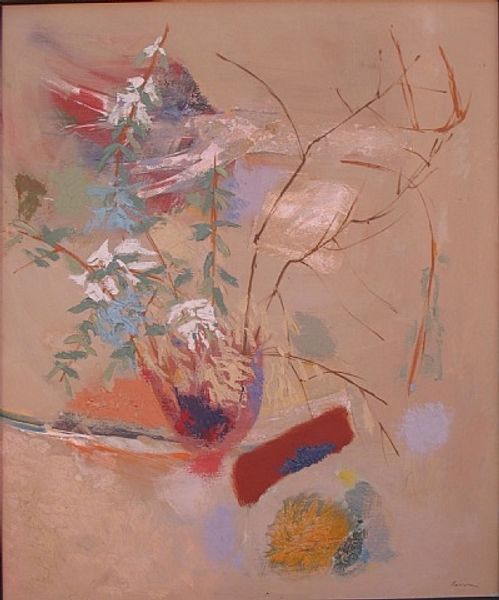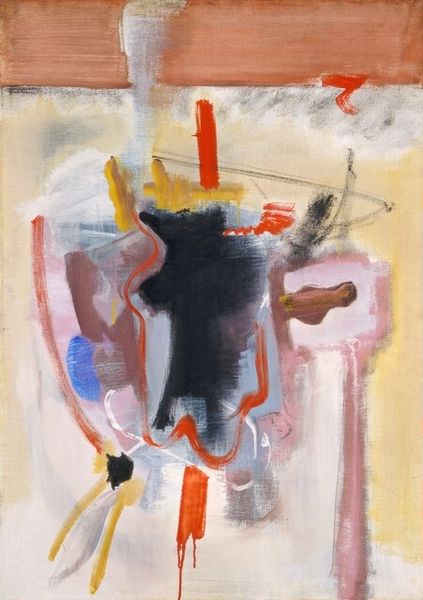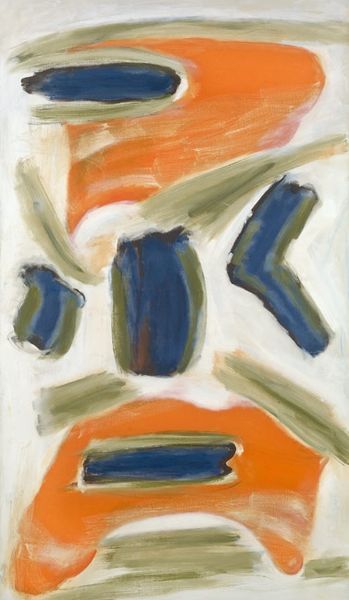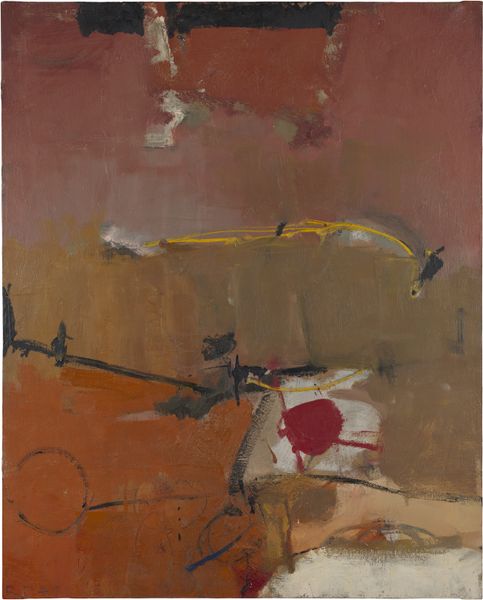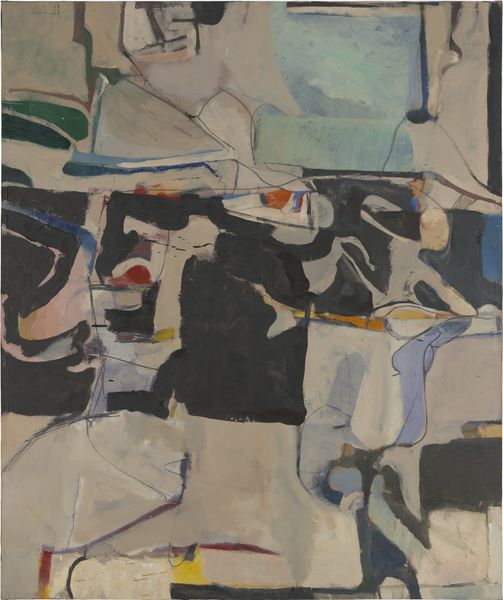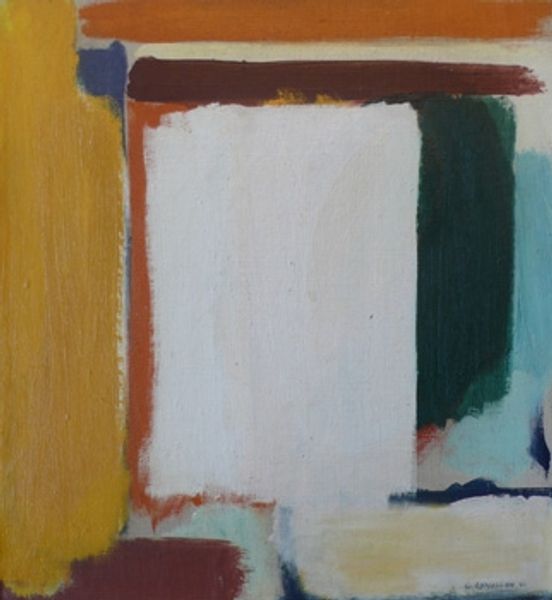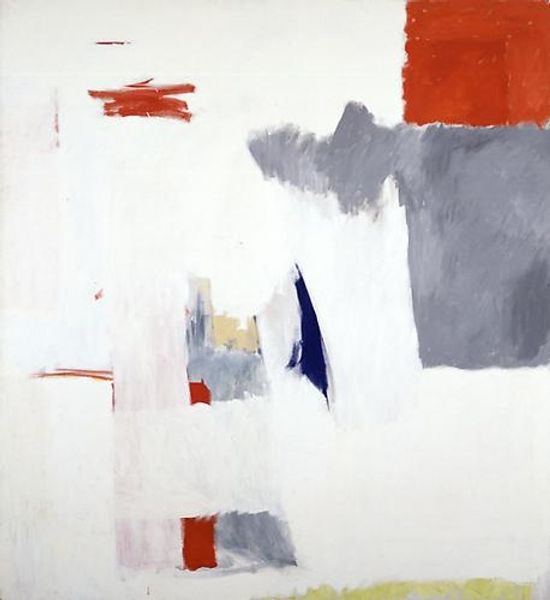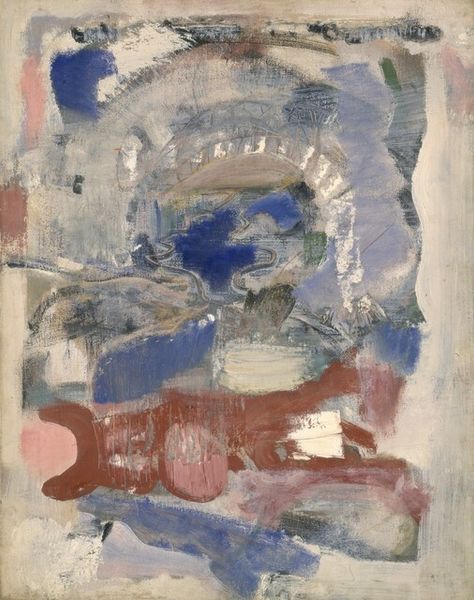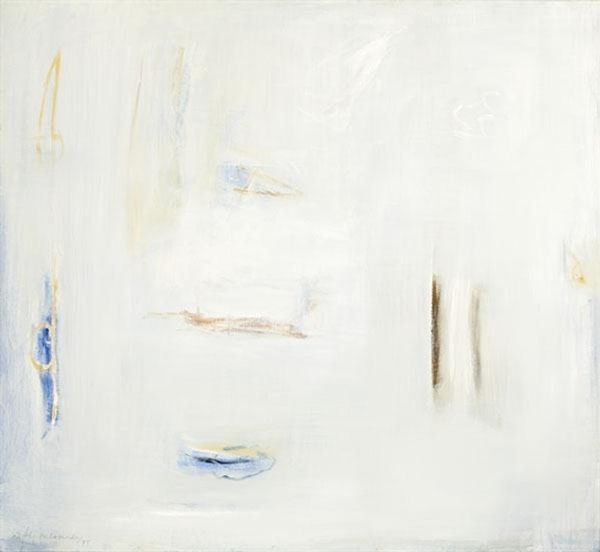
painting, oil-paint
#
abstract-expressionism
#
abstract expressionism
#
abstract painting
#
non-objective-art
#
painting
#
oil-paint
#
form
#
oil painting
#
abstraction
Dimensions: overall: 100.8 x 138.1 cm (39 11/16 x 54 3/8 in.)
Copyright: National Gallery of Art: CC0 1.0
Curator: Let's spend some time with Mark Rothko's "No. 3", painted in 1947. Rothko was a key figure in Abstract Expressionism, and this piece, executed in oil paint, provides insight into his evolving style during that period. Editor: It has a surprisingly delicate quality, considering the bold movement generally associated with Abstract Expressionism. The pale pinks and blues create an almost dreamlike atmosphere, don’t you think? Curator: It’s interesting you say that. Rothko’s move toward more ethereal, color-field paintings was not immediate. In the 1940s he worked through surrealist imagery, biomorphic abstraction, and various approaches as the American art world moved to be distinct and independent. It moved beyond purely European influences in its self conception. Editor: I'm struck by these ambiguous forms. Are we meant to interpret these as landscapes, or are they emotional terrains? The symbolism feels almost pre-conscious, like figures emerging from memory. Curator: Many see these forms as directly connected to the societal anxiety and sense of collective trauma in the years following World War II. Rothko saw art as a form of communication about core aspects of the human condition and being in an unstable world. The paintings became very important for a public that sought meaning and self understanding. Editor: Look how these colours bleed into one another, though. The boundaries aren't definite; the shapes seem almost transient. I sense that Rothko evokes the impermanence of self here. The colors and floating geometric forms seem to be interacting like characters from a play about identity and consciousness, rendered through abstraction. Curator: Rothko was deeply interested in the tradition of history painting and felt these paintings had as much impact as works that picture scenes from history or stories that serve as public symbols and values. So there is very much an engagement in this with history and our sense of belonging to a broader public project of the nation. Editor: I leave feeling there’s an undeniable depth. “No. 3” really captures a fragile moment of transition that’s both intimate and historically engaged. Curator: Yes, it does make one ponder how personal and public spheres collide and shape abstract, powerful forms.
Comments
No comments
Be the first to comment and join the conversation on the ultimate creative platform.

